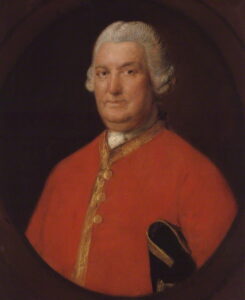
Major-General Stringer Lawrence Carrying a shield to his left lettered:
“For Discipline established, Fortresses Protected, Settlements Extended, French and Indian Armies Defeated, and Peace Concluded in the Carnatic.”
Hundreds and thousands left everything, and sacrificed more than their lives to achieve one common goal – India’s freedom from foreign rule. These were freedom fighters, activists, and revolutionaries coming from diverse backgrounds and philosophies who united to form a rebellion to fight against the Britishers. While we’re aware of numerous freedom fighters, there are several unsung heroes who have served the nation with unwavering commitment.
This piece of writing is an attempt to throw light on the lives and sacrifices of freedom fighters who have served the Indian Army to uplift and enhance the nation’s pride and prestige.
Start of the Indian Army
The current Indian Army dates back to the early 16th century where the Dutch, French, Portuguese, and the British arrived and settled in India as traders. The British especially saw India as an unending source of richness and fabulous treasures, and the East India Company setup in 1600 expanded severalfold, diversifying its operations, while also tightened its control on the Mughal Empire.
The fact that the Mughal Empire didn’t notice the threat of these traders to the political, military, and economic aspect set the platform for these traders to begin and tighten their rule and control on the nation. The British also raised levies to protect their trading interests that only soared following the war footing due to the European units who took measures to safeguard their trade and allied assets.
After the Mughal Empire declined rapidly during the second half of the 17th century, the Marathas, led by Shivaji, rose to power and tightened their hold on the Mughals. Shivaji expanded the Maratha Kingdom over 30 years, and competed with Afghan Empire, the French and the British to take over the almost extinct Mughal Empire.
The 1640 AD saw the British East India Company establish its first ever fortified post, Fort Saint George at Madras (now Chennai) that served as the company’s headquarters. The company established another post, Fort William, in Calcutta (now Kolkata) in 1651. The British also acquired Bombay (now Mumbai) from the Portuguese in 1662, and it served as the chief commercial and military base that officially became the Bombay European Regiment, comprising of cavalry, artillery and infantry elements.
Father of the Indian Army – Guidance, Team Formations
While the onset of a regular battalion-of-sorts in the Indian Subcontinent dates back to 1741, Major Stringer Lawrence was appointed Commander-in-Chief of the East India Company with Fort St. David serving as the company headquarters. The 1748 war with France encouraged a significant increase in the local enrolment of Indian troops.
This encouraged the King of England to send troops to India in 1754. However, it proved insufficient to meet the rising demands of the company’s military affairs in India, and the local recruitment of Indian troops continued.
In 1757, Major Lawrence appointed Robert Clive to reorganize the Indian troops into regular and organized battalions. It was also the period of the Battle of Plassey that diminished the French influence and enhanced the expansion of the company, encouraging it to acquire new territories across the nation. This expansion triggered a significant increase in the number of troops.
Major Stringer Lawrence laid the foundation to officially create the first ever regular Indian infantry battalions, each having:
- A British captain
- Two lieutenants
- Several British sergeants
- Several Indian non-commissioned officers
- Hundreds of Indian ranks and file
The appointment of Robert Clive was a redefining moment in the Indian Army who was the first British officer to fully equip Indian troops at the expense of the East India Company. The company was popularly called Sarkar, and Clive dressed the Indian troops in British red coats, called Lal Paltan.
Following the Bombay Garrison’s Sepoy Companies reorganization in 1759, two Sepoy Battalions were formed. The expansion and the rise of governors gave rise to the requirement for a Commander-in-Chief, and Major Stringer Lawrence did full justice to fill the position. This phase also saw the establishment of a formal Army Headquarters with Quartermaster General and Adjutant General appointed to work with the Commander-in-Chief head.
More on the following points to follow in our forthcoming articles:
The Indian Army under the British rule and wars fought.



